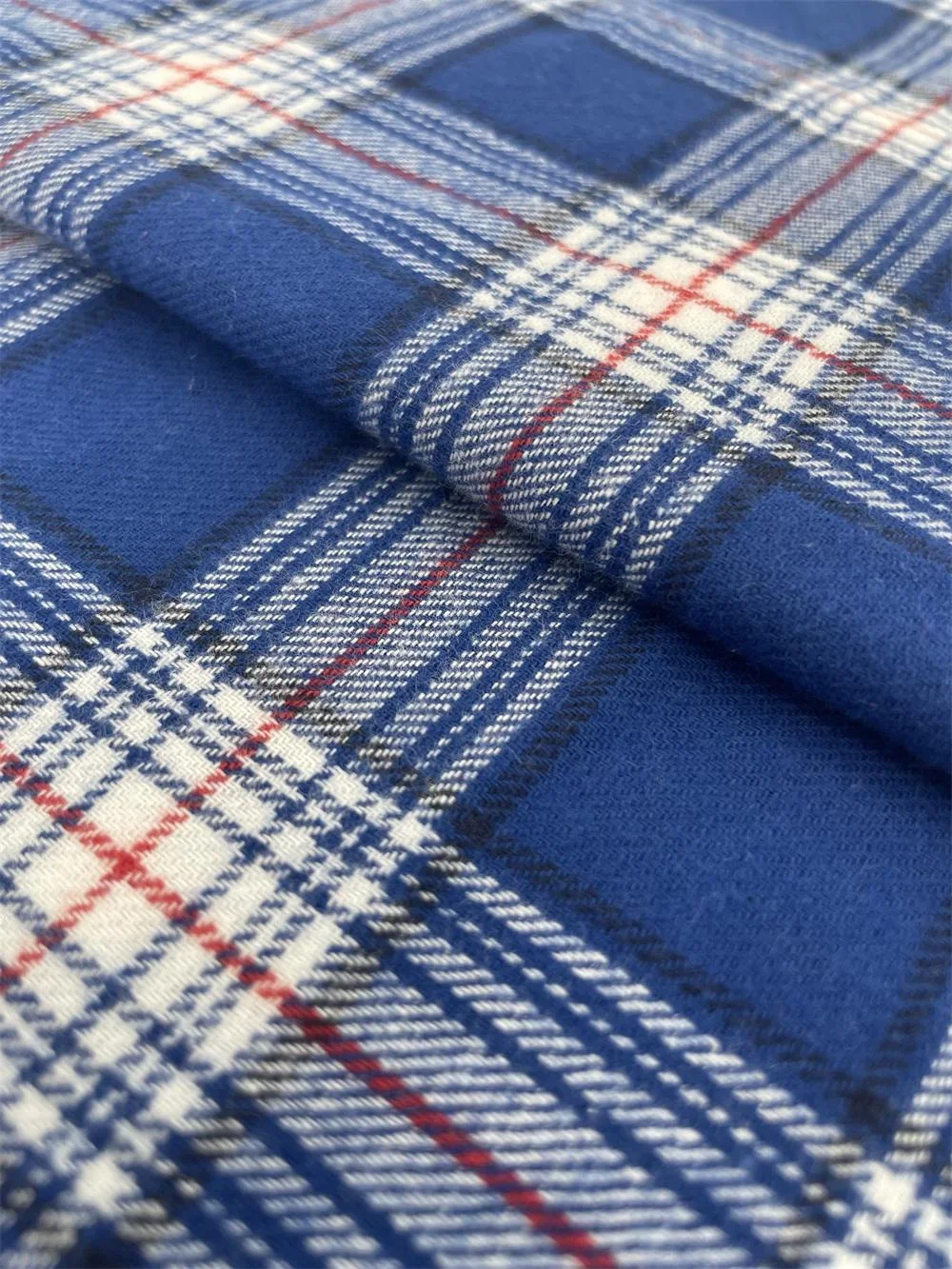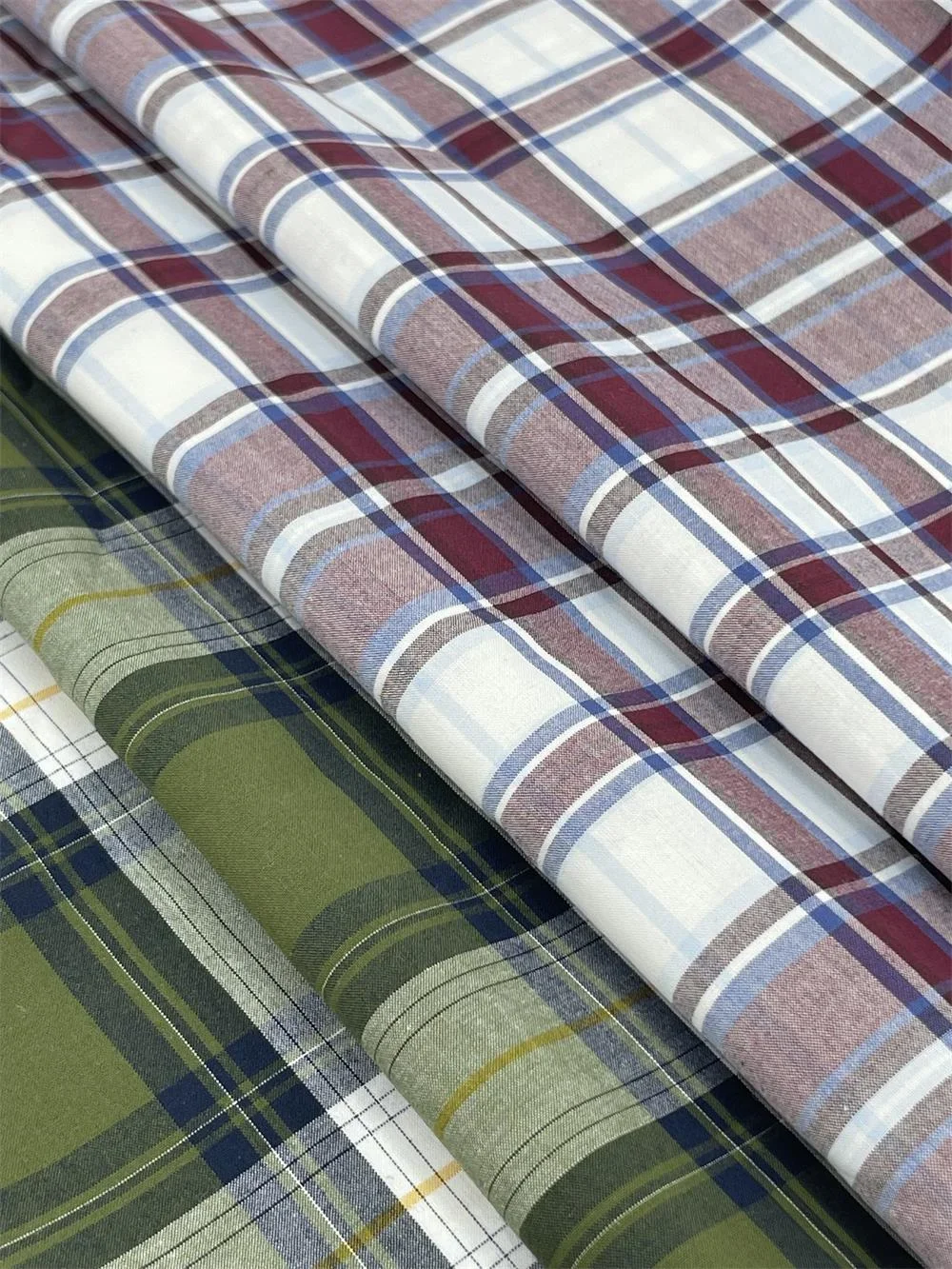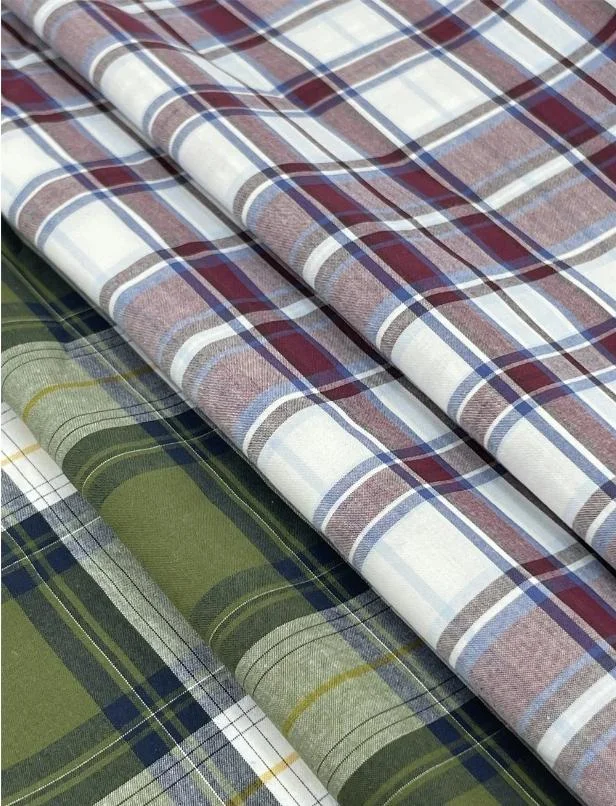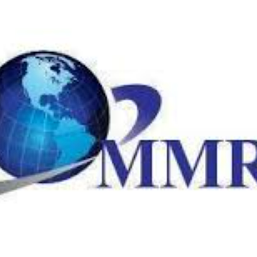Cotton fabric is a popular choice for clothing and home textiles due to its comfort, breathability, and versatility. Within the realm of cotton fabrics, there are various techniques used to create different designs and patterns. Two commonly used methods are yarn dyeing and printing. In this article, we will explore the differences between yarn dyed cotton fabric and printed cotton fabric, highlighting their unique characteristics and manufacturing processes.
I. Understanding Yarn Dyed Cotton Fabric
Yarn dyed cotton fabric is created by dyeing the individual yarns before they are woven into fabric. This process ensures that the color penetrates the entire yarn, resulting in a fabric with excellent colorfastness and durability. The patterns and designs in yarn dyed fabric are visible on both sides, making it reversible and versatile.
A. Definition and Characteristics
Yarn dyeing involves immersing the yarns in dye baths to achieve the desired color. The dye is absorbed by the yarn fibers, resulting in vibrant and long-lasting colors. Yarn dyed cotton fabric is known for its excellent color retention and resistance to fading, even after multiple washes. Additionally, the patterns and designs in yarn dyed fabric have depth and texture, adding visual interest to the fabric.
B. Manufacturing Process
The production of yarn dyed cotton fabric involves several steps. First, high-quality cotton yarns are carefully selected for their strength and uniformity. These yarns are then prepared by removing any impurities and ensuring they are ready for dyeing. The prepared yarns are then immersed in dye baths, where they absorb the dye and achieve the desired color. After dyeing, the yarns are dried and undergo the weaving process to create the final fabric.

II. Exploring Printed Cotton Fabric
Printed cotton fabric, on the other hand, is created by applying color or designs onto the surface of the fabric. Various printing techniques such as block printing, screen printing, and digital printing are used to transfer the desired patterns onto the fabric. Printed cotton fabric typically has vibrant and detailed surface-level designs.
A. Definition and Characteristics
Printing involves applying color or designs onto the fabric using different methods. Block printing, a traditional technique, involves carving a design onto a block and then stamping it onto the fabric. Screen printing uses a mesh screen to transfer the design onto the fabric. Digital printing utilizes computer technology to directly print the design onto the fabric. Printed cotton fabric is known for its vibrant and detailed surface-level designs, which can range from simple motifs to intricate patterns.
B. Manufacturing Process
The manufacturing process of printed cotton fabric begins with the creation of the design. Designers create the desired patterns and colors, which are then separated into different layers for printing. The fabric is prepared by ensuring it is clean and ready to receive the ink. The printing method is chosen based on the complexity of the design and the desired outcome. After printing, the fabric undergoes post-printing treatments such as drying, steaming, and washing to set the colors and improve colorfastness.
III. Comparing Yarn Dyed and Printed Cotton Fabric
While both yarn dyed and printed cotton fabrics offer unique design options, they differ in several aspects.
A. Appearance and Design
Yarn dyed fabric is known for its intricate patterns, depth, and texture. The colors are integrated into the yarns themselves, resulting in designs that are visible on both sides of the fabric. This reversible quality allows for versatile use in various applications. On the other hand, printed fabric offers vibrant and detailed surface-level designs. The colors and patterns are applied to the fabric's surface, creating visually striking designs.
B. Colorfastness and Durability
Yarn dyed cotton fabric exhibits excellent color retention and resistance to fading. The dye penetrates the entire yarn, resulting in colors that remain vibrant even after repeated washing. In contrast, printed cotton fabric may experience color fading over time, especially with frequent washing. The ink used in printing sits on the surface of the fabric and may not penetrate the fibers as deeply as in yarn dyed fabric. This can lead to a reduction in colorfastness and durability.
C. Reversibility and Versatility
One of the unique features of yarn dyed cotton fabric is its reversibility. The patterns and designs are visible on both sides of the fabric, allowing for versatile use in various applications. This makes it ideal for clothing items such as shirts, dresses, and trousers, as well as home textiles like curtains, upholstery, and table linens. Printed cotton fabric, on the other hand, is non-reversible, with the design only visible on one side. It is commonly used in clothing items such as t-shirts, skirts, and scarves, as well as home textiles like bed sheets, pillowcases, and decorative cushions.

IV. Applications of Yarn Dyed and Printed Cotton Fabric
Both yarn dyed and printed cotton fabrics have their own applications based on their unique characteristics.
A. Yarn Dyed Cotton Fabric
Yarn dyed cotton fabric is widely used in the production of clothing and home textiles. Its reversible nature and intricate patterns make it suitable for a range of clothing items, including shirts, dresses, trousers, and skirts. In the realm of home textiles, yarn dyed fabric is often used for curtains, upholstery, table linens, and other decorative items.
B. Printed Cotton Fabric
Printed cotton fabric is popular for its vibrant and detailed designs. It is commonly used in the production of t-shirts, skirts, scarves, and other clothing items. In home textiles, printed fabric is often found in bed sheets, pillowcases, decorative cushions, and other items that require visually striking designs.
V. Care and Maintenance Tips
Proper care and maintenance are essential to preserve the longevity and quality of both yarn dyed and printed cotton fabrics.
A. Yarn Dyed Cotton Fabric
To care for yarn dyed cotton fabric, it is recommended to wash it gently using mild detergents. Avoid using bleach or harsh chemicals that may damage the fabric or cause color fading. Additionally, it is advisable to dry the fabric in the shade to prevent direct sunlight exposure, which can lead to color fading over time.
B. Printed Cotton Fabric
Printed cotton fabric may require specific care instructions depending on the printing method used. It is important to follow the care labels provided by the manufacturer. Generally, it is recommended to use mild detergents and avoid harsh chemicals that may affect the colors or designs. Washing the fabric inside out can help preserve the vibrancy of the prints. It is also advisable to avoid direct sunlight exposure during drying to prevent color fading.

Conclusion
Yarn dyed cotton fabric and printed cotton fabric are two distinct techniques used to create unique designs and patterns on cotton textiles. Yarn dyed fabric offers intricate, reversible patterns with excellent colorfastness and durability, while printed fabric provides vibrant surface-level designs. Understanding the differences between these two methods allows consumers to make informed choices based on their preferences and desired applications. By following proper care and maintenance guidelines, the longevity and quality of both yarn dyed and printed cotton fabrics can be preserved, ensuring their continued enjoyment in various clothing and home textile applications.
Changzhou Hengwangjia Textile Co., Ltd.'s main fabrics include yarn-dyed fabrics, solid-color fabrics, printed fabrics, denim, corduroy, seersucker, taslan, etc., and supports fabric customization. Our main markets: Europe, America, Asia and other parts of the world.
We are a professional yarn dyed cotton fabric manufacturer,If you want to know more details about taslon material, please contact us.







